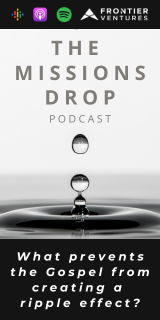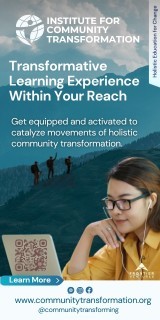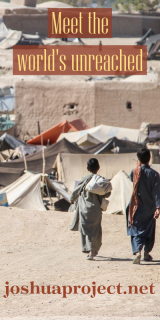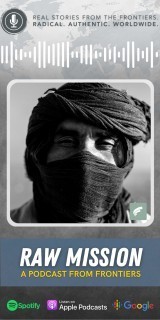Toward the Edges: Innovation in a Multi-cultural Setting

“So, brother, here in the West we have these lists of people groups, and as you know, there are organizations devoted to seeing movements to Jesus among all of the ones that aren’t reached. And ‘reached’ means…”
Unreached Peoples And Communication Challenges
I have had that conversation in various ways off and on for about 25 years, meaning I have talked about these things with believers within what would be considered Unreached People Groups. I have talked about the meaning of people groups, what the lists mean and how mission organizations view it all.
I have listened to the feedback, too. I have seen the different ways that people in those groups see themselves and their people. I have learned a lot about how some people groups on the lists see other people groups on the list.
Now, none of that has made me think that the lists are wrong or unhelpful! But my experiences have caused me to work hard at communication and at thinking about vocabulary. Of course, in many cases I was not using English, so I had the disadvantage, and advantage, of being able to use words of my choosing. In English, I needed to use long explanations.
Unreached Peoples, Innovation and Even More Communication Challenges
But more recently I have faced a different communication challenge.
How do we explain innovation? And beyond that, how do we explain it when we at Frontier Ventures are developing a unique approach to it? And how do we explain it to leaders of a movement to Jesus among a people group that is still unreached? How do we explain it relative to how that movement might use “innovation” to see a breakthrough in another people group? And how do we do all that using English but preparing for it to not be in English? To add one more wrinkle, how do we do that in a context with none of our usual tools?
Innovation in Frontier Ventures and Picking a Case Study
As others will explain further in this edition, Frontier Ventures’ approach to innovation is a unique mix. It combines design thinking and systems thinking. Those are pretty common in the “innovation world,” but Frontier Ventures adds a dimension that also blends spiritual discernment, theological grounding and a missiological focus.
The latter means we particularly aim innovation toward exploring new ways for people in least-reached people groups to experience new life in Jesus.
The process starts with a catalyst leader, who works with a core group to ask a question about a difficult or complex problem, and then the spiritual discernment and systems and design elements begin to kick in.
In the case I will relate here, this meant working with a team in South Asia. This team consisted of leaders from a large movement to Jesus as they sought to consider how to foster new approaches to reach what we now refer to as a Frontier People Group (groups with no known movement, less than .1% believers of any sort).
We were considering a particular Frontier People Group. The original framing of the question or problem was something like, “How can the barriers that keep the people from coming to Jesus be understood and overcome?”
So how did all of this work in another cultural context and with all the challenges that were presented?
Step by Step
I recently interviewed the South Asian leadership we worked with, and without going into all of the details of the process, I want to share the key insights from the interview.
“I missed a lot.”
The main interpreter mentioned this first. He had been involved through it all, had helped us design the process, had talked with us about how to understand it and explain it, etc. His assumption was that if he did all of that, he would be able to learn the process and reproduce it again.
But he felt that he did not absorb as much as he had assumed. He had to give too much of his creative energy to translation and interpretation.
But …“This was really helpful, I saw the fruit.”
He was asking how he could learn the process better. He saw how the people he brought together had responded, what they had learned about their assumptions and ways of making decisions in their own attempts to cross cultures, and how they ended up reaching more people with the good news.
However …“We didn’t reach the people group we thought this was for.”
As we proceeded, the participants did in fact gather a lot of data about the Frontier People Group that I had suggested we focus on. We learned a lot about them and confirmed that while there are some believers among them in the current movement, there is a barrier and a new movement will be needed.
But the group that gathered, as we entered spiritual discernment and listening prayer, identified several different areas of focus.
They identified a number of people groups that need movements, but none of them were the one we thought we had gathered in order to “innovate” together to reach!
A further observation…“I don’t think I gathered the right people.”
One of the most important elements in the whole innovation process is to have the right champion (which we did) and then the right “core” of people. In our case the champion determined afterward that he would have picked people differently had he better understood everything.
That led me to ask about what could have been prepared better, and he responded, “Nothing, I just needed to learn more about the process”.
And More
Other points of learning our friend reported:
“We gained a whole new understanding about why certain peoples are not coming into our movement.” “We understand better why this is hard, why some people are harder to reach.”
“We thought we understood how to reach Muslims in our country but we really only understood how to reach our people.”
(from a participant) “I never really noticed that in my area all these people were living. I just never thought about them. Then God told me to reach them, and I saw I would have to change my way of speaking and dressing and much more”
“Having outsiders there on the one hand was not a problem, but it meant we needed to be sure everyone understood why.”
“Using inductive Bible study helped us because that is what we do in our normal lives.” (Note, this was a change the Frontier Ventures team made)
And … a Surprise
I said above that our process resulted in specific new efforts to reach some Unreached People Groups, but not the one I had assumed or suggested.
However, just asking the questions, gathering the data and experimenting in other peoples has resulted in our trial people group landing on the radar of the movement leaders, and there has been a trickle of people starting to come to faith.
Edges to Edges
This case study is an abbreviated example of how working at the edges can lead to new insights, new approaches, and also to new edges!








comments